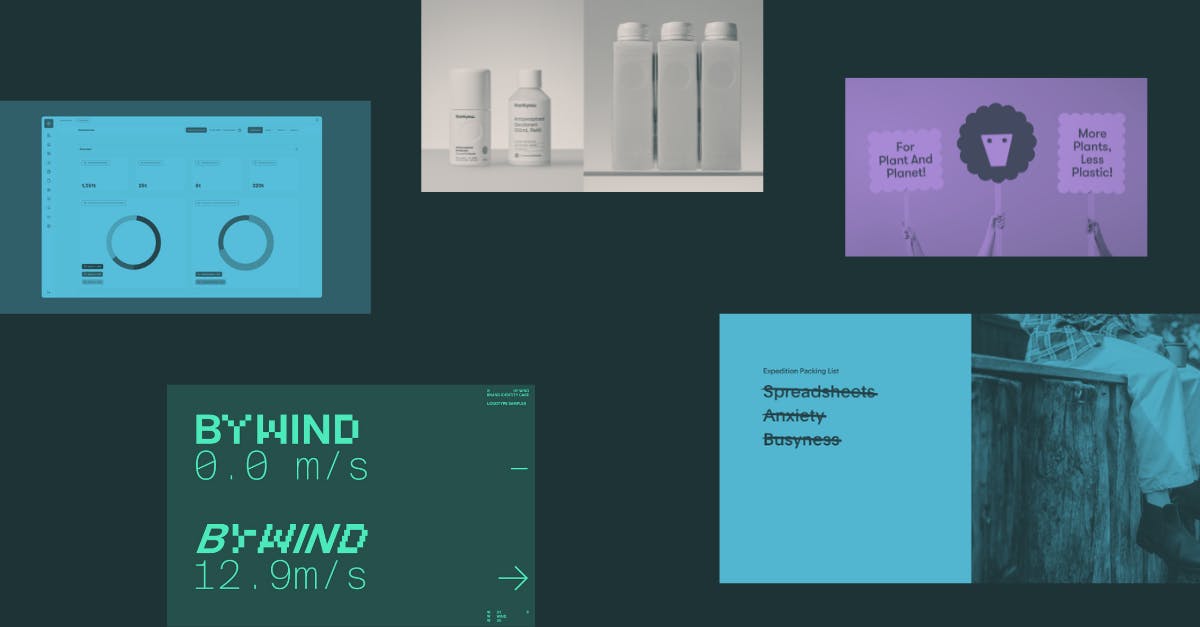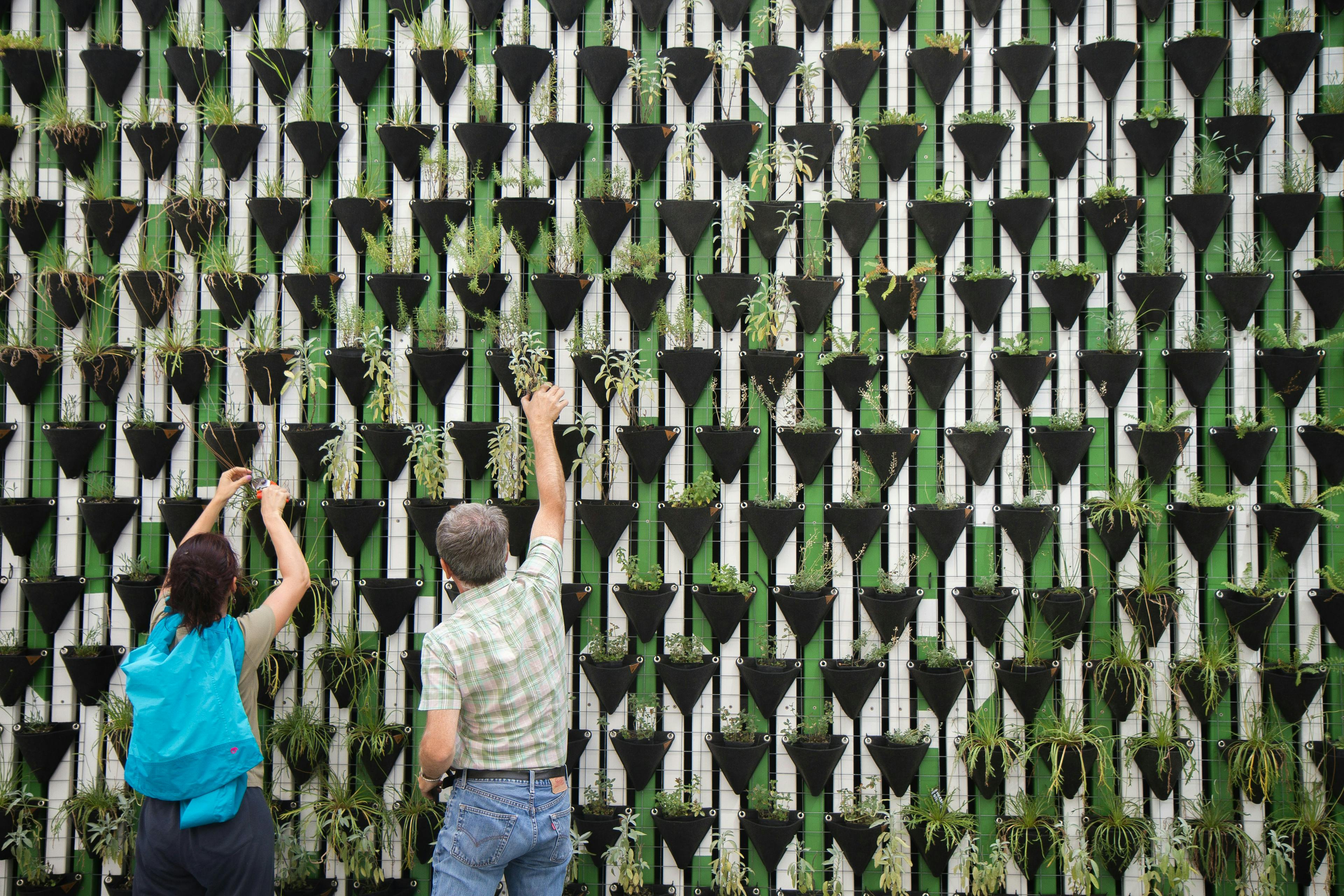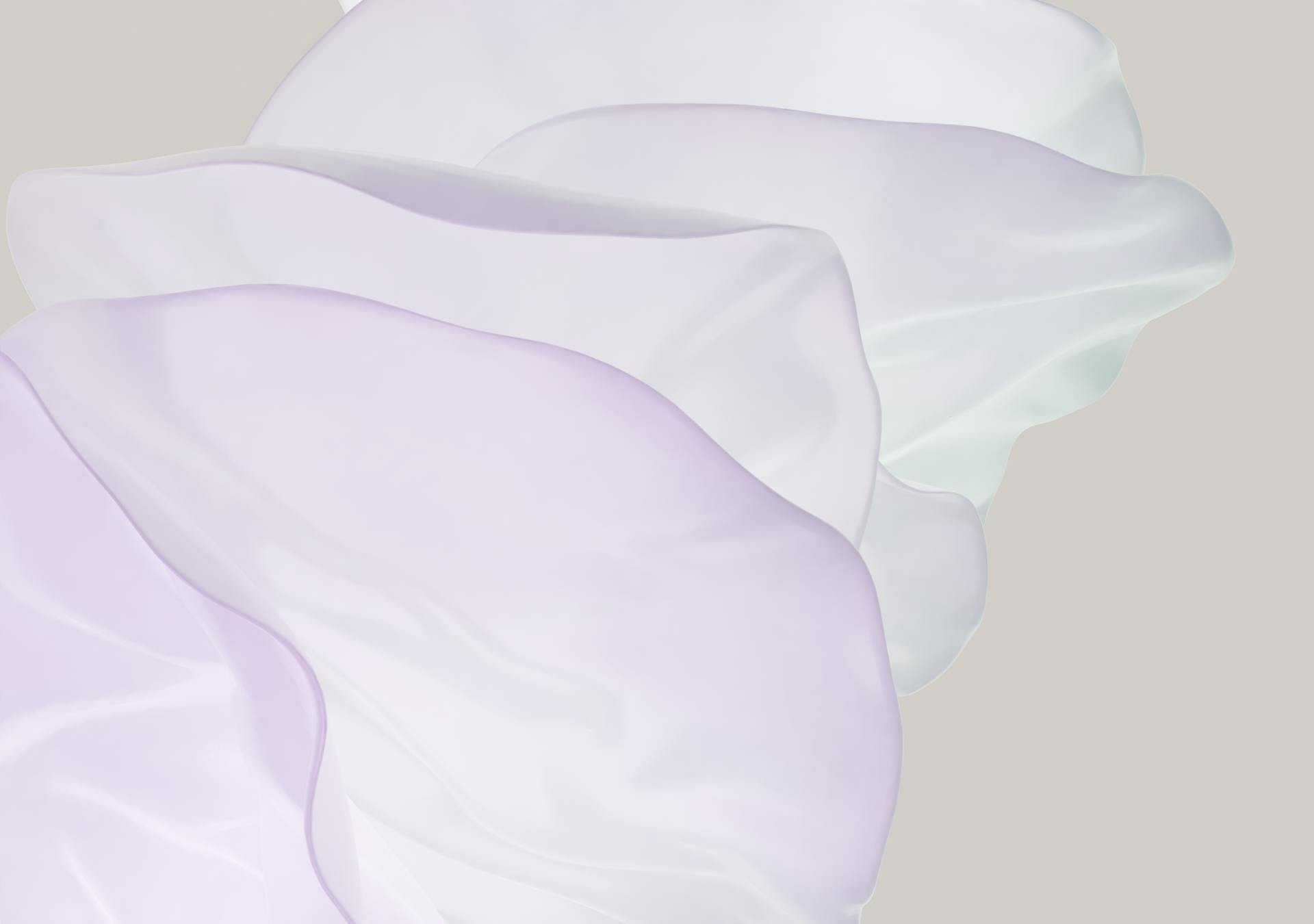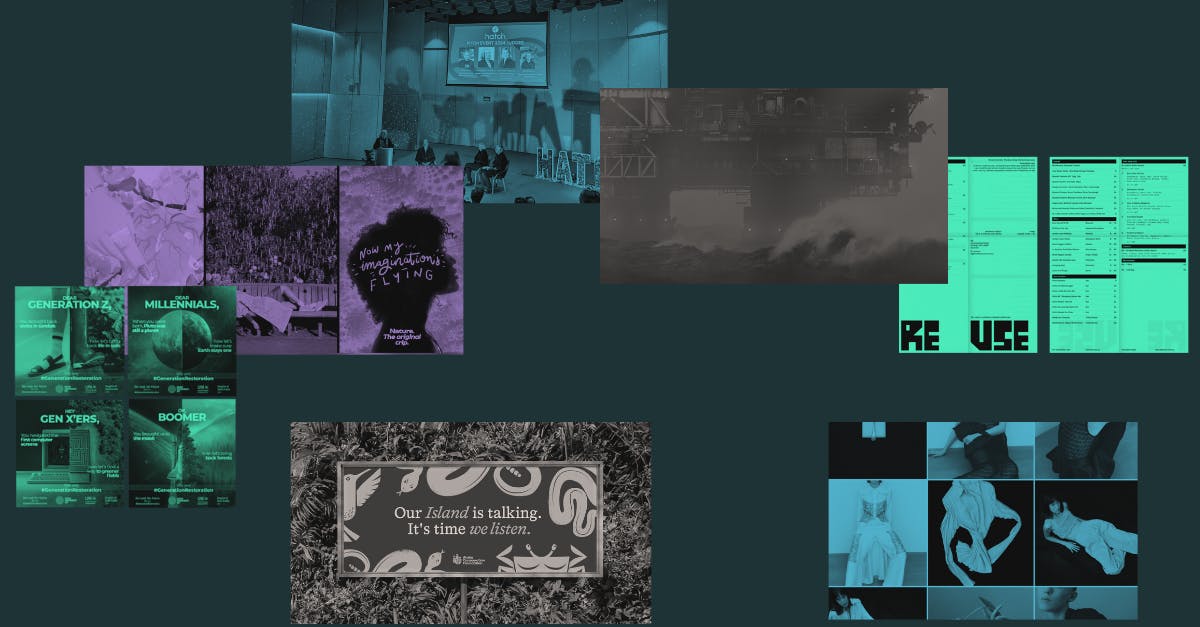
What does sustainability look like?
Written by
Jordan Stokes, Alanna Roy Bentley, Jaymee Kim, Alex Shute, Elise Margaritis, Stephanie Lau, Layla Valinoti - Sustainability Transformation
Welcome to the latest edition of ‘What Does Sustainability Look Like?’
In this series, Edge Impact's Brand and Communications team showcases the purpose-driven designs, sustainable brands, and impactful ideas that have recently inspired them.
This month, we're highlighting a Swedish fashion label championing slow-design clothing, a New Zealand initiative tackling food waste, a UN-backed campaign for all ages, and many other exciting developments.
The Great Endeavour

Written by Jordan Stokes, Global Creative Director
I first heard about the work of Liam Young on Accept & Proceed’s podcast Endless Vital Activity where he discussed his approach and how a background in architecture has ultimately led him to the self described profession of a ‘World Builder’: which is definitely one of the most impressive (if a little showy) job titles to grace any CV.
However the more I see of Liam’s work, the more I am just blown away by his vision and the sheer extent of his reach into art and culture.
Liam’s work occupies the spaces between design, fiction and futures, and maybe more impressive than his job title, he has been described by the BBC as ‘the man designing our futures’.
The outputs of his work imagine speculative worlds that are both extraordinary images of tomorrow and urgent examinations of the environmental questions facing us today.
Through film, props and set design Liam channels academic research and data in a way that people can actually see, hear and feel what our future could be like based on our actions (or lack thereof). The results are mesmerisingly beautiful but also dystopian and terrifying.
I’ve been reminded of Liam’s work recently via Paola Antonelli’s Design Emergency whilst looking into how we can use data informed visuals and prompts to help inform more sustainable choices when planning infrastructure or places. Where sustainability currently exists in the world of excel sheet modelling that can only be understood by the technically minded; digital and storytelling can play a hugely important role to help bring that modelling to life so that people can really imagine the implications, helping overcome the sense of disconnect we know most people get from looking at data alone.
The Great Endeavour was the piece of Liam’s work that I rediscovered recently, a short film that imagines humanity’s last great act of planetary transformation to de-carbonise the atmosphere through extraction at a scale equivalent to the entire global fossil fuel industry. The film describes imaginary engineering, workforce mobilisation and the co-ordinated collaboration of the international community in a way that is part ‘Blade Runner’ and part ‘2040’ brought together by a vast, multi-disciplinary team of researchers, producers, designers and makers (Science, Strategy, Storytelling).
Whilst I love Liam’s work, I understand the arguments that it’s too close to fiction to be alarming enough to drive immediate action, it can feel way too much like make believe until you start to unpack the research and evidence that forms part of the process. This is a challenge we face often, to be transparent and upfront with your evidence without swamping people with detail before they have a chance to connect with your story. However; I am excited by the possibilities that this type of visionary thinking could bring to more practical areas of sustainability, especially those that require governments, large organisations and industries to see the same picture and get behind a vision for better.
Generational genius or another spin on the greenwash cycle?

Written by Elise Margaritis, Strategic Communications Principal
As a child, I believed the United Nations was a real-life superhero. They arrived just in time, sporting sky-blue berets, to restore peace, deliver justice, and rescue children from the villains of disaster and war.
So, you can imagine my joy on World Environment Day (WED) when the UN Environment Programme (UNEP) launched their #GenerationRestoration campaign. This initiative came packed with clever quips and vibrant artwork designed to provoke and engage. Its brilliance lies in crafting messages that resonate with Baby Boomers, Gen X, Millennials, and Gen Z, ensuring each demographic feels personally included and empowered in the restoration movement. The visual content is tailored to each generation’s preferences. Gen Z enjoys vibrant, meme-worthy graphics, while Baby Boomers appreciate nostalgic, nature-centric imagery. There’s even a Spotify playlist, in chronological order by track release date. This generational tailoring maximises engagement by speaking directly to the values and communication styles of each group.
It appeared the UN’s sky-blue cape was fluttering victoriously in the winds of positive change. But hold on a moment… what’s that logo adorning the corner of each poster? The Kingdom of Saudi Arabia. Pardon?
This year’s WED theme focused on land restoration, desertification, and drought resilience, with global celebrations hosted in Riyadh. Many interpreted this as a veil of distraction for the world’s second-largest exporter of oil, whose economic foundations remain deeply rooted in fossil fuel extraction – the largest contributor to climate change. Is this greenwashing at its most deceptive? Or perhaps greenlighting?
In the grand narrative of climate change, oil-producing countries often play the role of the villains, their fossil fuel empires casting long shadows over global sustainability efforts. Yet, just as in any compelling superhero saga, there’s room for redemption. Engaging these nations through initiatives like World Environment Day can be seen as an attempt to bring them back from the dark side.
The #GenerationRestoration campaign, despite its perceived flaws, embodies the spirit of a true hero: inclusive, empowering, and relentless in its mission. It strives to unite diverse generations under a common cause, utilising art and messaging that resonate deeply and personally. The inclusion of Saudi Arabia, controversial as it may be, could signify an olive branch, an opportunity to transform a perceived villain into an ally.
Generational genius or another spin on the greenwash cycle? The verdict may still be out, but one thing is clear: the UN’s sky-blue flag, symbolic of hope and justice, continues to fly high. It reminds us that in the battle for our planet’s future, everyone—even the villains—must play a part. By engaging all stakeholders, including those entrenched in fossil fuels, we might just rewrite the script and secure a happier ending for our environmental superhero story.
In the end, the #GenerationRestoration campaign challenges us to think beyond black and white, hero and villain. It urges us to embrace complexity and seek collaboration, proving that even the most unlikely alliances can lead to a healthier, more sustainable future planet.
Space for innovation
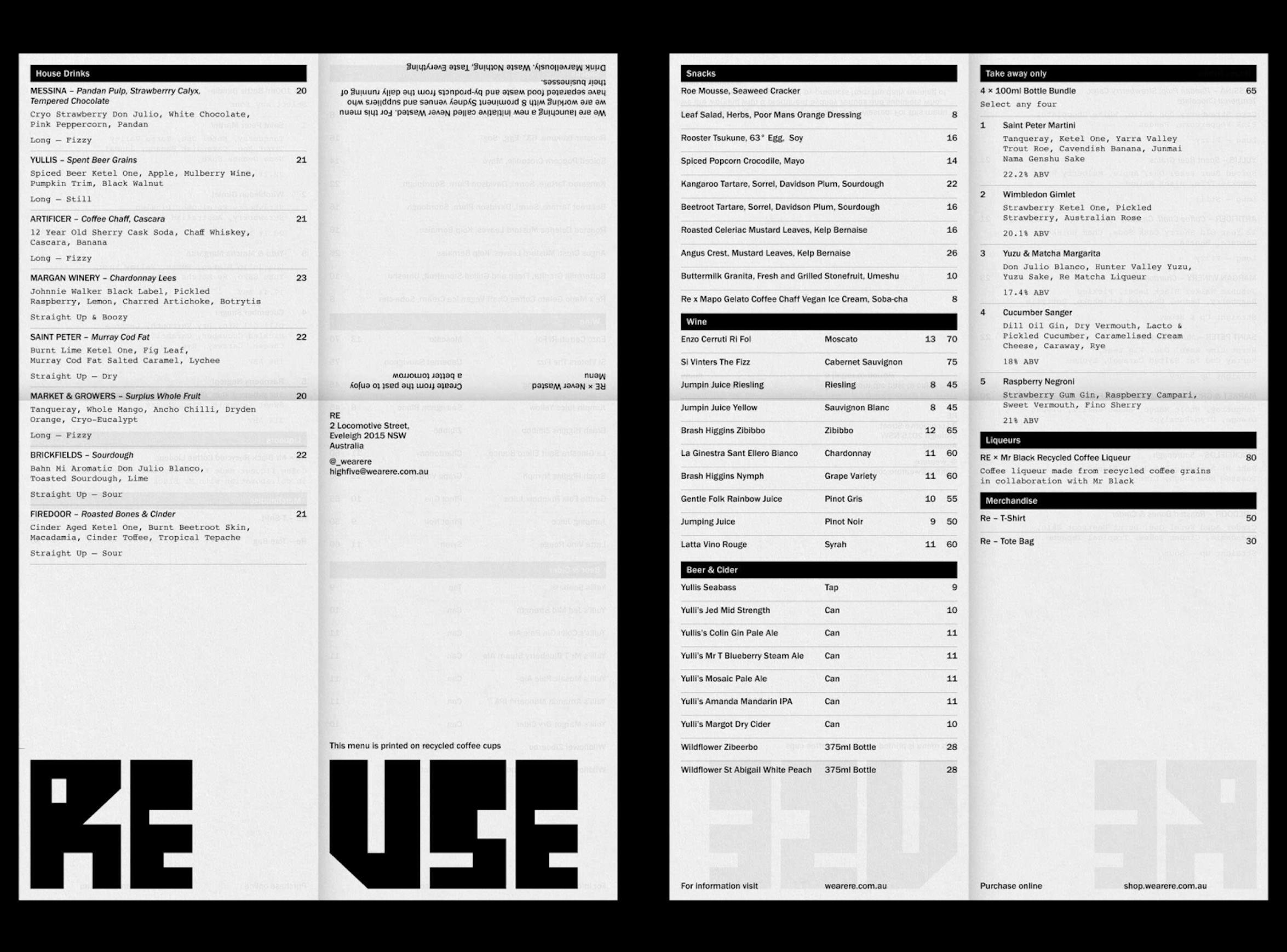
Written by Jaymee Kim, Senior Designer
The past year, I have been working on a project called Kai Keepers, an initiative by Restaurant Association NZ in conjunction with Edge Impact, to reduce food waste within the hospitality industry in New Zealand. It truly has been one of my favourite projects to work on thus far.
Post brand identity, the project is still within its pilot phase with almost 120 participants who are keen to part take, monitor and tackle the food waste that is produced within their stores (Restaurants, cafes, bars and more) to advance their commitment to sustainability.
Working with our Edge Circular Economy and Lifecycle Thinking team, it’s been fascinating seeing the feedback, data and findings from the pilot. Using these to come up with design objectives and proposed solutions to help support, motivate and promote mindfulness and consistency in the practice of weighing their waste and engineering new solutions to prevent food going to landfill.
From the beginning of this project, I was always fascinated by the branding and concept of the bar Re by Standard Projects (sadly they had closed early this year). The reality of food waste and reimagining into something wonderful isn’t always as expected. Which is why I love how the branding of RE acknowledges that they created an identity that was both “ugly and beautiful, elegant and brutal” inspired by this concept. This is shown from the use of textures created, brutal modernist approach to type and ever changing identity.
When it comes to design for sustainability, it’s important to acknowledge all sides of it, even if it’s not the most beautiful thing. I find transparency and the ability to create beauty out of progress and imperfection one of the most charming and impressive things. It truly gives space for innovation in a constantly changing world, and room to keep on experimenting and exploring to create something truly sustainable.
From brand strategy to digital campaigns, we help organisations of all sizes embed sustainability authentically.
Learn more about our Brand, Communications & Creative Services.
Hatch - Taronga’s Accelerator Program
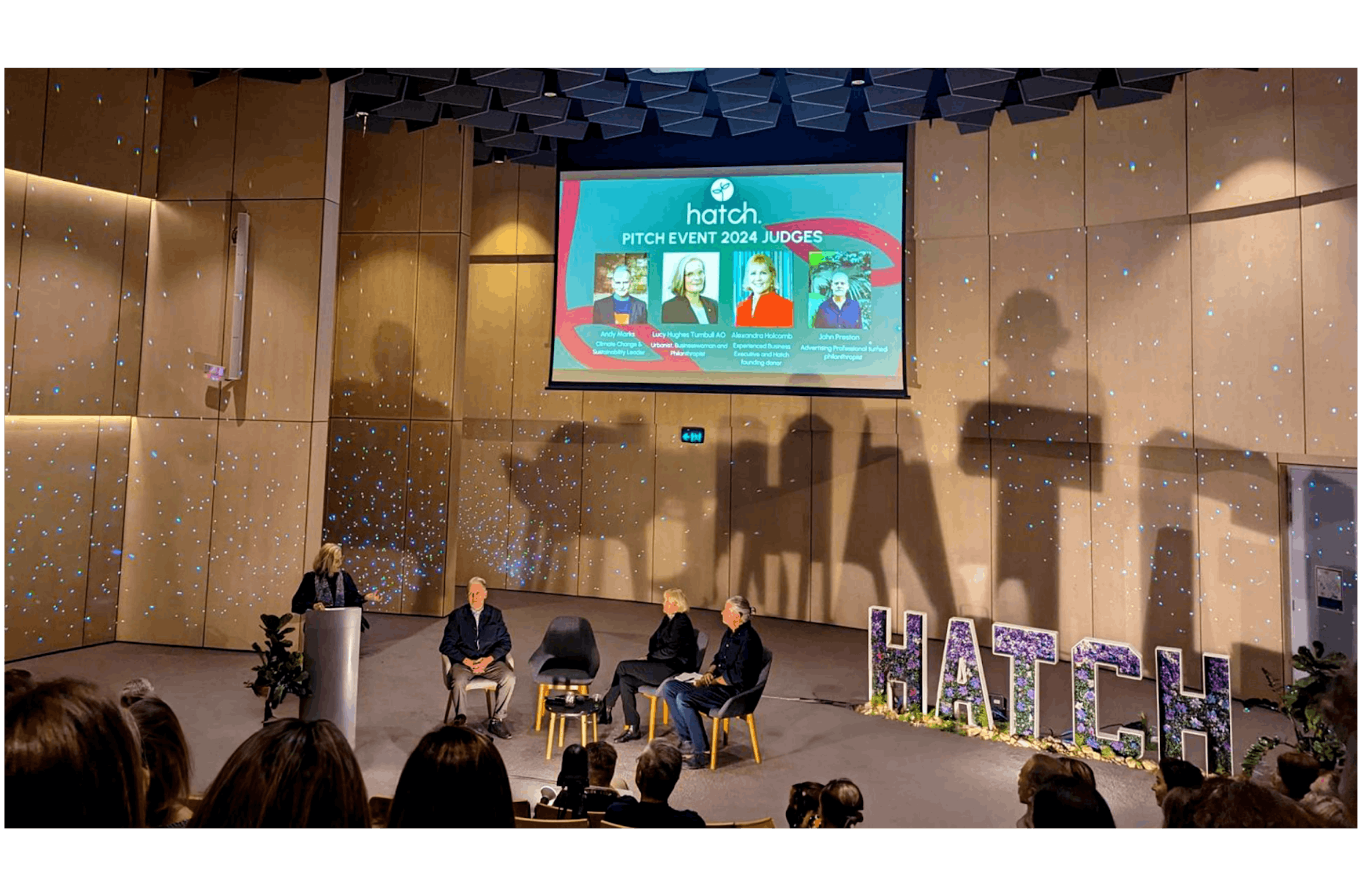
Written by Alanna Roy Bentley, Senior Creative
Last week I went to support a fellow Greenhouse Tech Hub resident Alice Kendall as she gave her final presentation at Hatch Taronga’s Pitch Event for her start-up Pledge for the Planet.
Hatch is the successor of Green Grant Program that Taronga Zoo had launched in 2011 - it is the world’s only accelerator program that is led by a conservation zoo, and gives the opportunity to the successful applicants to the program to receive up to $50k in funding at the end of a 14 week mentoring program - where they are connected with mentors and subject matter experts in masterclasses and workshops to help them launch their innovative ideas.
Start ups are selected for the program that are still in their concept, pre-launch or early stage venture and have plans to develop into a no-for-profit and, crucially, have innovative ways to target key conservation or environmental challenges, make a positive impact on the natural environment, and are a aligned to the United Nations Sustainable Development Goals (SDGs) and Taronga’s 360 degree approach to conservation.
The Pitch Event is the culmination of the 14 week program, where the winner is announced, and a people’s choice award is chosen by the live audience in Taronga Zoo’s Auditorium. Over the course of the evening the six teams of ecopreneurs delivered their pitches and answered questions, overseen by the judging panel which included philanthropist, businesswoman and urbanist Lucy Turnbull AO, one of Hatch’s founding donors Alexandra Holcomb, climate change and sustainability leader Andy Marks, and marine biologist and advertising legend John Preston.
This year’s winning pitch (drum roll please) was The Groundswell Collective - co-founded by Anna Noon and Mark Colquhoun. Their not-for-profit focuses on creating densely packed patches of diverse, native vegetation in urban areas to support a thriving, connected and sustainable future. The $5,000 People’s Choice was taken home by Medical Pantry - an organisation that collects surplus unused medical supplies destined for landfill and delivers them to animal rescues across Australia.
Although I was sad that my friend did not walk away with the prize - I knew that what she was able to gain from the experience in itself was game-changing for Pledge for the Planet and taking it to the next level, propelling her motivation and determination. It was so inspiring to see all these self-determined and passionate individuals and teams working together towards making a positive impact, and clearly demonstrated for me the value that support, knowledge sharing, mentorship and collaboration have in making a positive impact.
Aruba Conservation Foundation rebrand - How&How
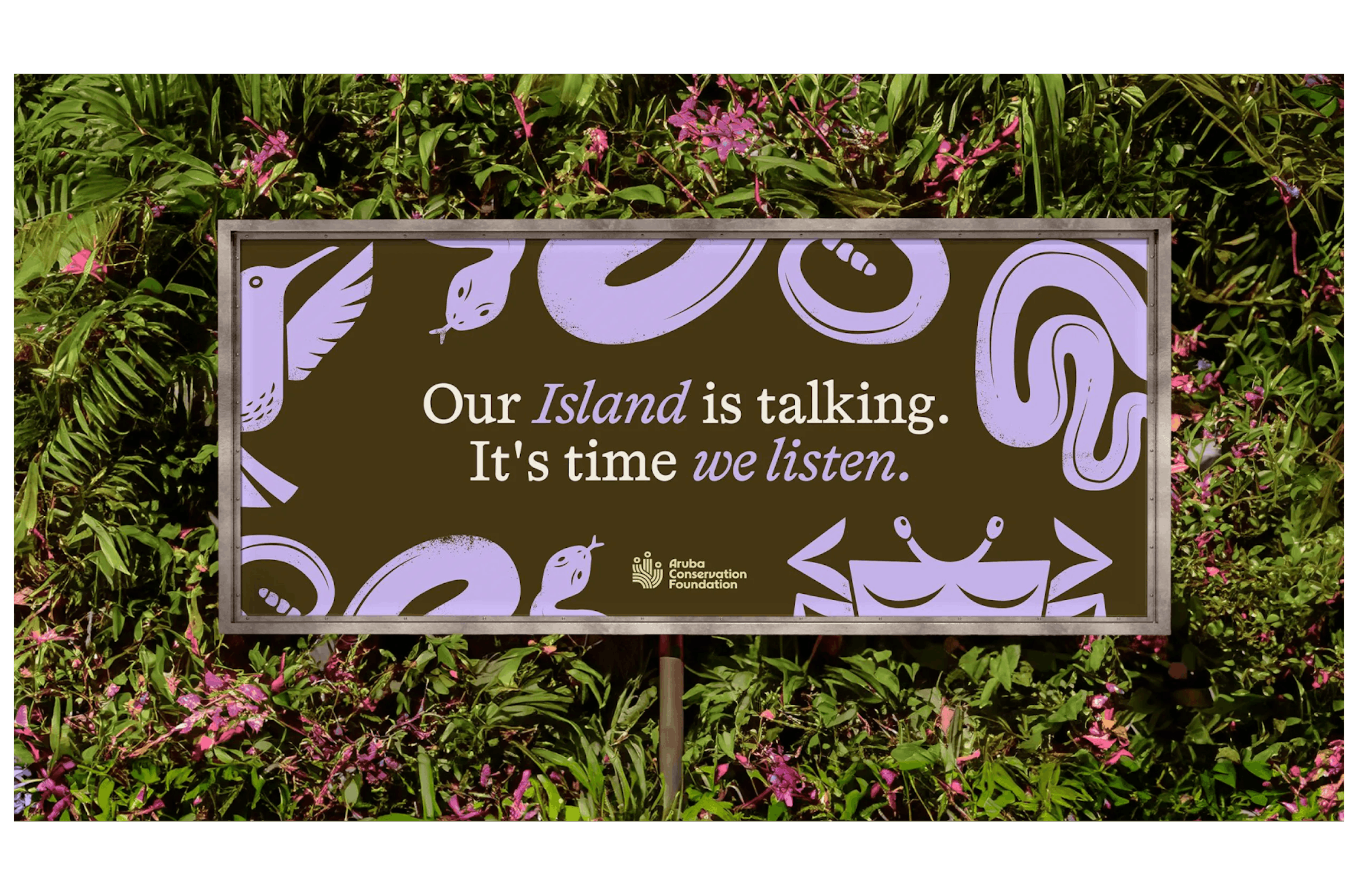
Written by Alex Shute, Designer
Aruba, situated in the south Caribbean Sea, is an island known for its pristine beaches, vibrant culture, and being the first country mentioned in the 1988 Beach Boys chart-topping hit, Kokomo. However, there’s much more to this special place than meets the eye.
Aruba’s rich terrestrial and marine ecosystems are home to about 245 species of birds alone - some of which are endangered. This is why the Aruba Conservation Foundation’s work to protect this biodiversity is so incredibly important, and why it was imperative that How&How studio nailed the design of their rebrand (TLDR - They definitely did).
It goes without saying that the brand is aesthetically stunning. I was immediately charmed by the animated illustrations of Aruba’s native endangered species, in particular, that of the Shoco owl. They’re bold and refined, but textured shading and details within the negative space add a naive quality to the illustrations - each one looking as though it was carved from a block of wood.
Albeit beautiful, the visual design is merely a vessel for conveying complex messages and inspiring community engagement. The carefully chosen colour palette, taken directly from Aruba's diverse landscapes, educates viewers about the island's varied ecosystems. Similarly, an interactive map visualises Aruba’s 10 protected areas, raising awareness about local biodiversity in an engaging and memorable way. Even the logo's clever integration of waves, cacti, and people symbolises the interconnectedness of marine life, terrestrial ecosystems, and collective action.
Most importantly though, this rebrand shifts the focus from tourism to local pride and participation in conservation efforts. By creating a sophisticated and meaningful identity, How&How has given ACF the tools to educate, empower, and inspire the Aruban community to take an active role in preserving their natural heritage.
The Agency for Nature
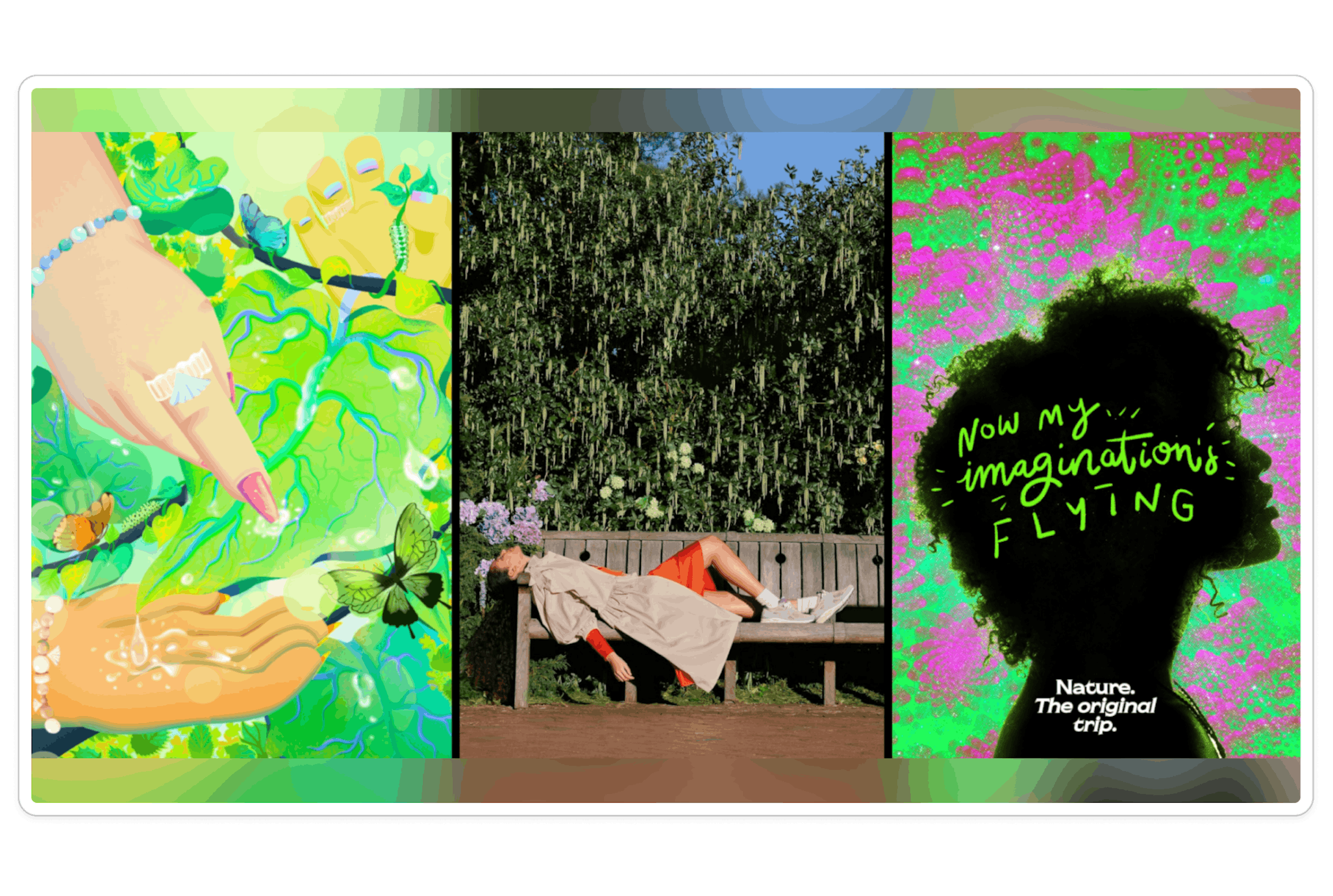
Written by Stephanie Lau, sustainability Communications Manager
When World Environment Day rolled by earlier this month (5 June), it made me remember coming across an interesting initiative earlier this year where nature became the ‘client’ for creative advertising agencies based in the UK.
Agency for Nature brought together 10 creatives across 5 agencies, and the brief was to come up with 5 campaigns that rekindled the human desire and re-enchantment to connect with the natural world, especially amongst younger audiences aged 30 and below.
One particular data point in the brief really stood out to me: the presence of words associated with nature in films, songs and books has declined by 63% since the 1950s. This really points to we have become more disconnected than ever from nature, and how it’s not part of our collective imagination and cultural conversations as it once was.
While we can acknowledge that the advertising industry still has a way to go in terms of change and using creativity in service of a sustainable future, I do appreciate the eclectic range of responses that portrayed nature in somewhat unexpected ways. From vibrant hypnotic artwork that nods to the psychedelic ‘nature trip’ of spending time outdoors, to a whimsical erotic pocket guide to intimately reconnect with nature, each campaign represented our relationship to the natural world in ways that felt refreshing and did not feel too serious and cliché (i.e. no hand palms holding a pile of soil with a seedling, please).
I think this is a solid example of how important it is to tailor our approach to creativity and communications to produce something that is truly unique and thought-provoking. It's a fine balance to strike when it comes to playing it safe (and of course, complying with regulations and standards) and pushing the boundaries, but I believe more unconventional ways of storytelling should be encouraged in the sustainability space. While we should always base what we say on evidence, it’s important to surface deeper, emotional insights so we can come up with something that is not run-of-the-mill and can genuinely surprise and delight.
The one tiny negative I have is whether future briefs could extend beyond specific formats (e.g. billboard, digital banner) to have more of an impact. For example, could a social media campaign incorporate educational content for those who are interested to learn more about a specific area of sustainability? Perhaps there could be a product or service design element that enables some type of action to be taken, such as pledging their support? Or maybe the challenge is to translate a bunch of complex data from the latest IPCC report into compelling visuals and headlines that resonate with mainstream audiences?
I’m curious to see what briefs are released in the future to reimagine the conversations we have around sustainability.
Ecology-led, slow-design clothing
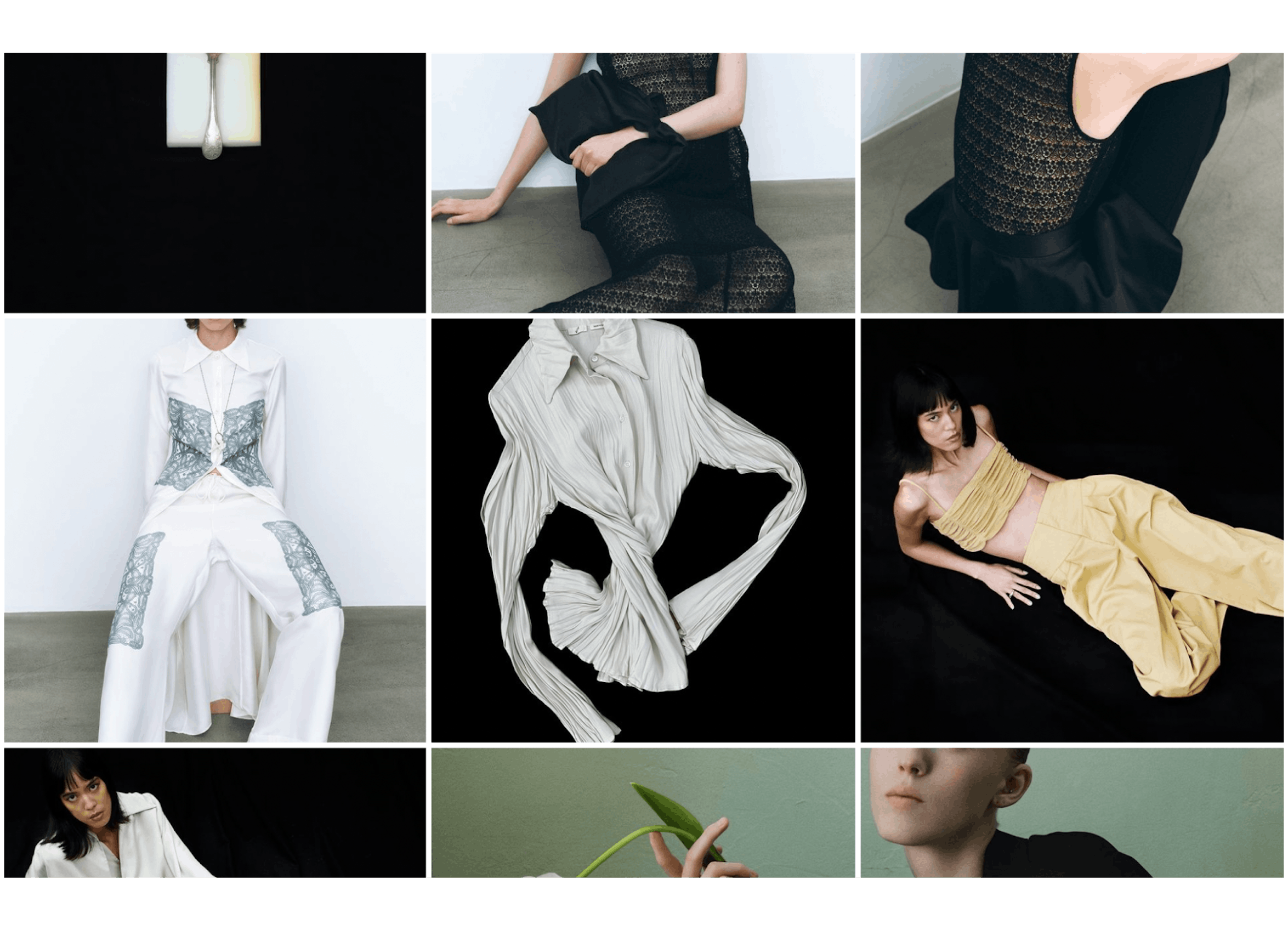
Written by Layla Valinoti, Content Writer
With France recently passing a bill to impose higher taxes and ban advertising for ultra-fast fashion manufacturers, all eyes are on the rest of the world to follow. So, what better time to celebrate the brands prioritising patience, slow design, and sustainability in their craft?
Enter BITE (aka By Independent Thinkers for Environmental progress). A Swedish fashion label with a self-proclaimed reverence for the natural world and a collection that reads like a love letter to Mother Nature.
BITE makes a conscious effort to work with materials that are soft and luxurious to the skin and kinder to the planet. The visually stunning website showcases the brand's ‘expressive minimalism’ and conveys its respect for eco-conscious clothing through words and imagery simply and beautifully.
Going beyond ambiguous cliches of 'eco-friendly’ or ‘green’, BITE's material library is laid out for you to view, including organic silk and cotton, responsible and organic wool, and forest-friendly viscose. What you won’t find? Virgin synthetics, non-organic cotton or silk, and animal skins or fur. This type of transparency — and resistance to compromise — is essential when sustainability is the goal.
Priced on the higher end, BITE may be out of reach for some. But hey, a girl can dream. If you’re lucky enough to have some BITE items to donate or sell once you’re ready to move on, their buyback scheme will give you 20% of their original price so they can repurpose them (yay, circularity).
Sustainable clothing is so much more than the beige, dull garments that first spring to mind for many of us. And I can’t wait to see more of them in the spotlight now that we’re turning our backs on fast fashion.
Stay tuned for more of what delights us from the world of sustainability creative next month.
Or if you were hoping for something a little more technical, head over to our insights page for the full range of thoughts, ideas and opinions from the brilliant minds at Edge Impact.
Explore previous editions of this series here:
Our services include brand strategy and identity creation and refinement, product and service design, graphic design and art direction, digital and campaigns and experiential.
What we do
As experts in the full spectrum of sustainability topics, we are here to guide you through the complexity. Our team includes specialists from across the globe; from strategists to economists, engineers to creatives. Since 2008, we have been helping businesses, organisations, industries and societies make transformation happen.
Our areas of expertise are focussed around the following areas:
Leadership and Transformation
ESG and Strategy
Decarbonisation and Climate Resilience
Circular Economy and Lifecycle Thinking
Procurement and Supply Chain
Nature and Biodiversity
Brand, Communications and Creative

